The Shop With A Nervous System
Automatically recording and distributing information about what's happening while a machine tool is in operation leads to process improvements and higher productivity for this aircraft manufacturer.
Share






Hwacheon Machinery America, Inc.
Featured Content
View More


Autodesk, Inc.
Featured Content
View MoreAir conditioning was not an option.
Contour Aerospace's Brea, California, five-axis gantry machine facility encloses 75,000 square feet and fifteen of the long-bed milling machines—most of them with multiple spindles. The shop also runs night and day. Just holding the building to a constant ambient temperature could cost more than a million dollars per year.
And it might not even solve the problem. The aluminum aerostructure parts the company machines—some of them about 100 feet long—can expand, contract, and shift position to produce errors on the order of 0.200 inch. Holding the dimensions of these parts stable enough to overcome this error would require not just control of the shop temperature, but the ability to hold workpiece temperature to within just several degrees. This, when the numerical control (NC) cycle itself may stretch across more than 24 hours.
So Contour chose a "soft" solution instead. The approach promises to be not only far cheaper, but also more effective.
Contour is equipping its process with the capacity to adapt to temperature changes as they occur. The company is networking all of the existing computer numerical controls (CNCs) in the gantry shop to a central server, which will sample each machine's work zone temperature in real-time, and post-process on the fly to scale each new tool path command according to any temperature change.
Thus, thermal growth will no longer leave the NC program behind. Adaptive programs will track the changes and follow right along.
Think of it as virtual air conditioning.
Or, think of it as a rudimentary nervous system for the shop. Like a living organism, Contour's process will acquire the ability to sense an external stimulus—in this case, heat—and initiate a reflexive reaction.
None of the component technologies for this system is new or revolutionary. With one exception. Tool paths will be sent to each CNC across an Ethernet network link. And for the adaptive system to work, the CNCs must receive these tool paths as fast as if they were reading them from internal memory. The key to achieving this is a retrofit open architecture board.
That is, a board to open the existing Fanuc CNCs to data communication—in fact, two-way data communication—that overcomes the speed limit imposed by their RS-232 serial ports.
The hardware will solve a narrow problem for Contour, but promises to improve other shops' processes in widely different ways. Few shops may share Contour's problem with thermal error, but a vast number have at least one thing in common with the gantry facility: a process built around Fanuc CNCs.
These proven CNCs form a barrier to direct networking only because all but the newest versions were designed to be self-contained and proprietary. However, open these CNCs to direct interaction with a PC network, and a range of possibilities opens with them. Automatic part tracking and even remote monitoring become not only possible, but quite feasible.
And in Contour's case, the way was clear to increase drip feed rates by a factor of 20.
Appetite For Data
Not all of Contour's machines will need the serial-port bypass, but three critical ones will. All run by Fanuc controls, these machines are reserved for the shop's most intricate contouring work. But because computer-aided manufacturing systems construct contours by dividing them into fine chords, these machines also see the NC programs that are the most dense in tool path moves.
Forcing a CNC to receive such frequent tool path commands across a 9600-bps (bits per second) serial port would cause the process to suffer from data starvation. That is, the CNC would execute commands faster than it could receive them, leaving the cutter to dwell in place after each short move while the data flow caught up.
Therefore, the key to efficient, continuous machining was to avoid the serial port bottleneck, and instead open Contour's CNCs to data transmission via the company's Ethernet network. This change will permit drip feeding at about 200,000 bps.
But purchasing new, open CNCs for the critical machines was no more of an option than climate control. Never mind the significant expense—the company also has a custom postprocessor and a large staff of skilled operators, both of which would be rendered ineffective until they could be updated for any new controls.
That left "opening" the existing CNCs as the only practical way for Contour to achieve its temperature compensation.
"I thought it would be easy," says Don Stephenson, the engineer who devised the network that is currently being installed. "But then," he says, "I didn't have to do any of the hard work."
He brought the idea to Memex Electronics, a Burlington, Ontario, company that had already reverse-engineered the Fanuc control to create a third-party memory upgrade. Working from this foundation, the company spent over two years developing the adapter board that would permit direct networking to Fanuc controls, in versions from Series 6 and beyond.
The now-finished result is the missing link that makes direct networking to these CNCs possible. The board essentially creates an open window to the CNC, permitting access to its internal parameter data while the machine is running. Real-time machine status data can come out, and remote commands can go in—all via the network link.
The first such board arrived at Contour Aerospace about two months ago, and the shop-wide network is now going into place.
But appreciating where open CNCs will take this particular company means seeing where the shop has been.
Hot And Cold
Real time temperature compensation for Contour's process has been a goal for a long time.
Along with a previous incarnation of the company, Contour has specialized in machining large aerospace parts for just about 20 years. Mr. Stephenson has watched the company's machining process for 18 of those years—previously as an employee of Contour, currently as the president of its information services contractor, Grapevine Networking (also in Brea).
He realized years ago that adaptive temperature compensation was theoretically possible. After all, the technology exists for precisely measuring
temperature, and the expansion coefficients exist for precisely predicting the temperature's effect on the size of the workpiece. The truth is out there.
The only problem was how to reveal this truth to a process that wasn't equipped to react to it. Describing closed CNCs like Contour's as "islands" is becoming a cliché among open system proponents, but in fact this fails to capture the scope of Contour's problem. When a complex NC program can enter only via a serial port, the closed CNC requires the postprocessor and the workpiece to be islands, too. As a result, the postprocessor outputs an NC program based only on the computer-aided design file and some assumed billet and fixture dimensions, and the machine stands idle while this program (often 1.5 MB for Contour) is transferred in its entirety across the only channel available, the 9600-bps serial port. Meanwhile, the program might be growing more and more inaccurate all the time, as ambient temperature changes alone redefine the workpiece geometry.
Contour's operators communicate across this archipelago as best they can. At present, the shop deals with the potential for thermal variations by using redundant part programs. The company creates different versions of the same program for 60° and 70°F shop temperatures in the winter, and 70° and 80°F in the summer. These programs assume a baseline temperature of 68° (standard among Contour's customers—Boeing, for one), then scale the part according to the discrepancy from the program's nominal temperature. The operator looks at the thermometer on the wall to determine which program is more appropriate.
"But instead of writing programs in 10° increments, we should have been writing them every 2°." That, according to Robert Jeffs—now "Boeing program manager" for Contour, and a former director of engineering. He says that even a 2° change is enough to affect feature location sufficiently to make an error out of an otherwise accurate cut. The only problem is that such fine variation in the programming would lead to a confusing and unworkable proliferation of NC codes.
So Contour uses just two programs instead, but spends all of its available tolerance on making these programs fit any likely temperature. The "cool" program in each pair errs on the high side of the tolerance band and the "hot" program errs on the low, so that a small departure from the nominal temperature will still allow the program to cut the part to spec—for the most part. In truth, rework is common.
"You hope it's just an oversize problem, something that can be machined down to size," says Mr. Jeffs. Also, break-out features that don't locate correctly can be handworked into position.
But when the part is undersize or cannot be corrected, the situation is more grim. The only option is to begin again—after accepting that time and material worth $50,000 to $150,000 has been lost.
Adaptive Machining
The new network-based solution aims to eliminate these expenses—both rework and scrap—by using not the thermometer on the wall, but temperature sensors in the workpiece fixture. A server, the CNCs, and these sensors will all connect to the same network. Continually sampling the sensors, the server will average the data, calculate the corresponding amount by which the workpiece (and fixture) has grown or shrunk from the baseline 68°, and incorporate this change into the next tool path command to be sent to the CNC. (Contour did perform temperature studies of its machines before devising this system. The studies concluded that thermal growth of the machine components made no significant contribution to error when compared to workpiece growth. Certainly not every shop can make the same assumption.)
The network server will be the new source of program commands for all of the shop's CNC machines. The strategy will employ a custom postprocessor that uses an ASCII cutter location format to write programs usable on all of the shop's various makes of five-axis machine tools. This program was written by Mr. Stephenson himself, and has been used by the shop for some time now. However, to achieve real-time temperature compensation, the postprocessor will no longer just output the complete NC program before any machining begins. Instead, it will take advantage of the freedom that the high speed network offers to supply tool paths to all of the CNCs—even the Fanuc models used for fine contouring—as they are needed. This will let the NC program grow and shrink dynamically just as the workpiece does.
Real-time post-processing will lead to other benefits as well, says Mr. Jeffs.
One of these will be the ability to restart the program in mid-cycle. At present, replacing a broken tool means restarting from the beginning, using a new program that incorporates the dimensions of the new tool. But with real-time post-
processing, tool dimensions can become just more scaling factors like thermal effects. Programs will be able to incorporate new tools into the cut just by going back 100 lines or so, and starting from there using the new tool's dimensions.
But Mr. Jeffs points to another benefit that will lead to even greater peace of mind: Program security. Or program control.
Contour is constantly vulnerable to redundant and dangerously outdated programs, he says. Designs are regularly revised by the customer. However, under the current system, an operator may accidentally load the wrong program from a diskette or from CNC memory—a program that is presumed current, but is in fact an old version missing the latest round of changes. The result can be costly, because the mistake is almost never caught until after the part has been cut.
Contour's response is The Rule. There may be only one copy of any program anywhere on the shop floor at any time. Even so, Contour machines a vast number of parts. Superseded programs do slip by.
However, the network will bring the potential to make The Rule obsolete. Every CNC's programs will reside on the common server. In fact, each program will come into existence only as the part is being machined.
But, these are side benefits. According to Mr. Stephenson, the furthest reaching implications of the open network will come from the mastery of the temperature variable. When a similar capability spreads to other shops, he says, it will eventually allow most of an airplane's fastener holes to be machined prior to assembly.
Compare that to today's process. Suppliers like Contour machine only non-critical holes, leaving the critical ones to be drilled while the mating components are held in place on a jig. Machine these holes any earlier, and thermal effects would move corresponding holes out of alignment.
The result: Every airplane model comes with a significant expense for jig tooling.
But what if a precise temperature allowance was already a part of each hole's location coordinates? If so, then mating structures would need only be brought to the same temperature for the holes to fall into place.
The result could be jigless assembly of much of the airframe, which would drastically change the economies of scale. Without the jig tooling cost to amortize over the production run of an aircraft, these runs could shrink considerably and still be profitable.
Today, airplane buyers must select from among just a handful of mass-produced models. But tomorrow, temperature-compensated machining may make custom-designed aircraft quite feasible.
Open Door
Contour Aerospace illustrates one example of the type of process improvements that can be won from an open CNC system. However, Memex Electronics president Tom Gaasenbeek can cite another, somewhat more confidential application, involving a company that expects to win an entirely different set of benefits.
A major Midwestern manufacturing facility has used the adapter boards to network the CNCs in a pair of two-machine flexible manufacturing cells, creating a four-machine system for large-batch machining. The resulting faster data communication has already cut cycle time per part by 17 percent, because there is no longer a delay before each new cycle while the CNC receives the cell controller's instructions via the serial interface.
However, the network also permits centralized, real-time monitoring and control of the entire machine and material handling system, all through a single PC software master (see sidebar).
The next addition to this network will be a coordinate measuring machine, to allow the network server to gather part quality data automatically and monitor statistical trends. When the server discovers that a feature is trending out of spec—say, because a tool is starting to wear—it will react accordingly, says Mr. Gaasenbeek. The network software will automatically change the appropriate work offsets or rewrite the NC code to bring subsequent parts in on target.
The juxtaposition of this example alongside Contour's illustrates an important characteristic of open CNC systems. Whether the "openness" is by design or the result of a retrofit, the possible applications of an open system are...well, wide open.
Contour will add to the information available to its previous serial network system, to achieve a process that senses and adapts to temperature. A similar feedback system could sense and adapt to horsepower demand, for adaptive roughing that guards against tool breaks. And a system for acoustic monitoring of tool wear—that is, letting the network listen to the cutter's whine the way skilled machinists do now—has been proposed for automatic tool management of the networked flexible cells described above.
But an open CNC also can let information flow out. When they share the same network protocol, why can't the shopfloor network and the office network be part of the same entity? The merger could let any linked PC access the current status of any and all machines—even across the Internet—and automatically track trends for maintenance, scheduling, and even profit projections based on machine output.
Open architecture simply means that automation no longer has to end at the CNC.
And in the case of Contour Aerospace, it didn't have to end at old CNCs, either.
Related Content
Orthopedic Event Discusses Manufacturing Strategies
At the seminar, representatives from multiple companies discussed strategies for making orthopedic devices accurately and efficiently.
Read MoreThe Power of Practical Demonstrations and Projects
Practical work has served Bridgerland Technical College both in preparing its current students for manufacturing jobs and in appealing to new generations of potential machinists.
Read More6 Machine Shop Essentials to Stay Competitive
If you want to streamline production and be competitive in the industry, you will need far more than a standard three-axis CNC mill or two-axis CNC lathe and a few measuring tools.
Read More4 Commonly Misapplied CNC Features
Misapplication of these important CNC features will result in wasted time, wasted or duplicated effort and/or wasted material.
Read MoreRead Next
Registration Now Open for the Precision Machining Technology Show (PMTS) 2025
The precision machining industry’s premier event returns to Cleveland, OH, April 1-3.
Read More5 Rules of Thumb for Buying CNC Machine Tools
Use these tips to carefully plan your machine tool purchases and to avoid regretting your decision later.
Read MoreBuilding Out a Foundation for Student Machinists
Autodesk and Haas have teamed up to produce an introductory course for students that covers the basics of CAD, CAM and CNC while providing them with a portfolio part.
Read More


























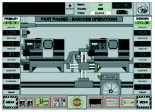
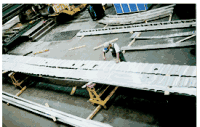
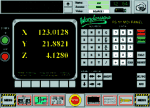
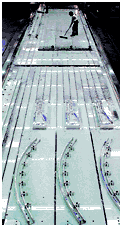

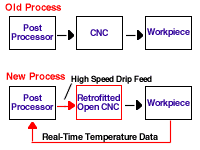







.jpg;maxWidth=300;quality=90)


















